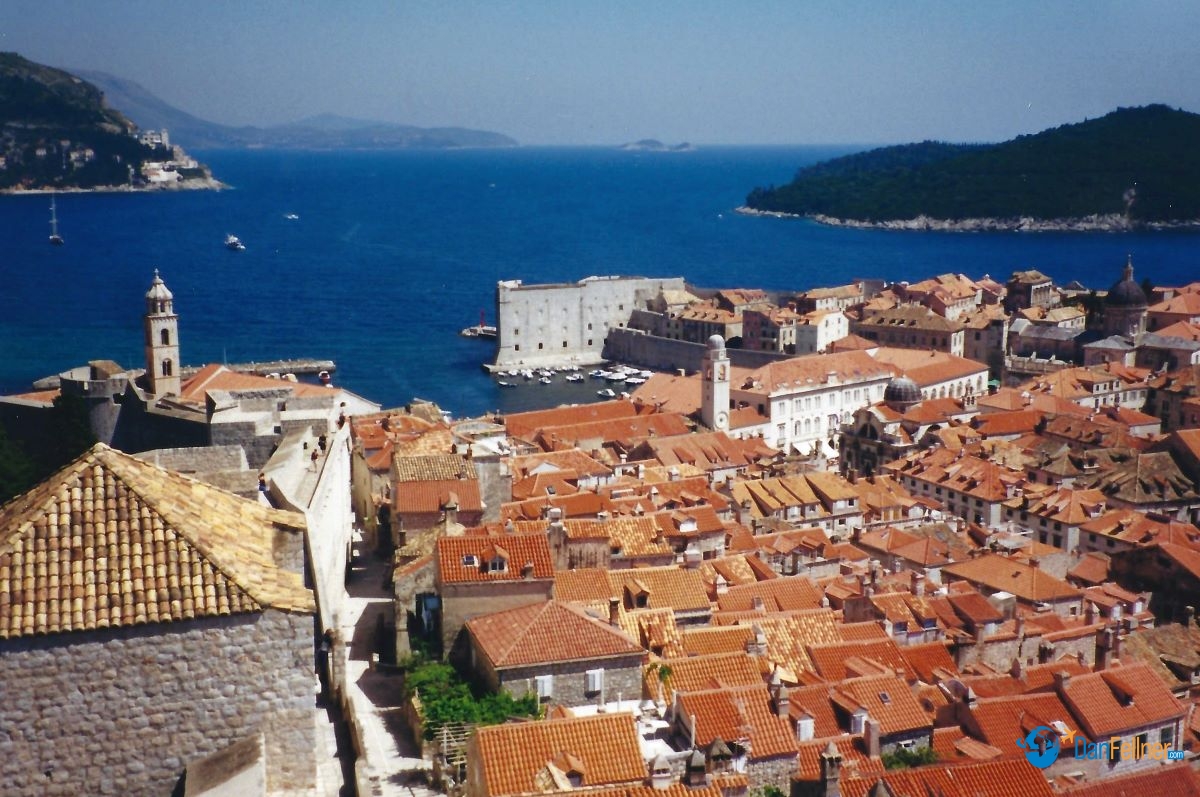Offbeat itinerary to Ukraine, Romania offers fascinating stops
East Valley Tribune – July 15, 2001
“Excuse me,” a shopkeeper said I passed his stall in the bazaar in Kusadasi, Turkey.
I was browsing my way through the endless rows of knockoff designer goods, including bogus Rolex watches, Lacoste shirts and Louis Vuitton purses.
“Best-quality merchandise,” he told me. “Authentic fakes.”
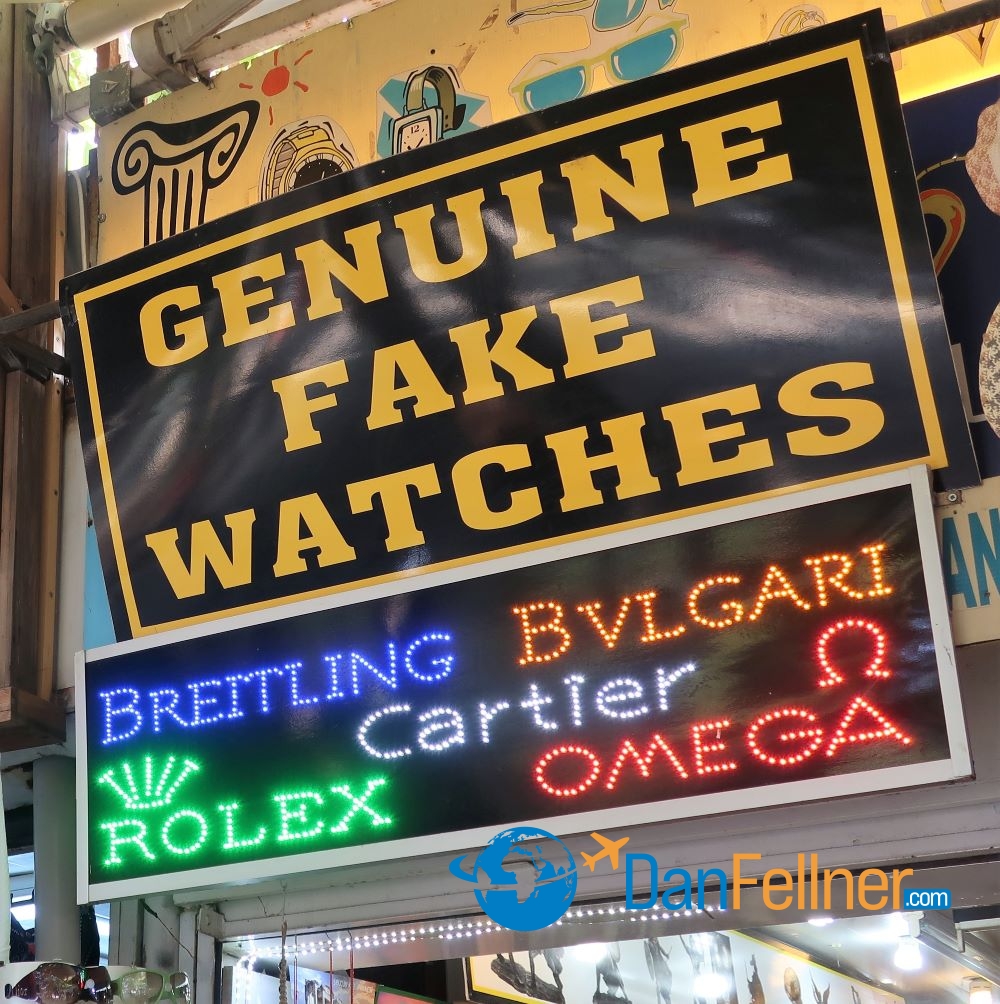
“Genuine fake” watches for sale in Turkey.
Kusadasi was the fourth stop on my recent 12-day Renaissance cruise that visited mostly off-the-beaten-path ports on the Adriatic, Aegean and Black seas.
Some of the goods for sale I saw along the way may have been inauthentic, but the trip was filled with the type of genuine experiences increasingly difficult to find on many itineraries that visit all-too-familiar ports overrun with other cruise ships.
Indeed, to a growing number of cruise connoisseurs, the Caribbean and Alaska just don’t cut it anymore. Instead of sailing to St. Thomas or Skagway, they are more interested in visiting places such as Morocco and Malta. And they want to get there with all of the creature comforts and convenience that cruising offers.
While the trip started and ended in fairly well-known and popular destinations – Venice and Istanbul – it was the ports in between that attracted me to this particular itinerary. The ship stopped in non-tourist-oriented countries such as Ukraine, Romania, Bulgaria and Croatia – places in which we would be just as likely to see horse-drawn carts as souvenir shops.
First, though, we met our ship in Venice, where there are plenty of souvenir shops and tourists. But the city is so charming and unique, the crowds are worth enduring.
Venice was built on water more than 1,000 years ago and consists of 118 islands, all linked by bridges and canals. Everyone gets around by gondolas or motorized water taxis and buses, as cars and trucks are not allowed in the city.
We took an evening gondola ride, which glided us through the city’s narrow canals and gave us an up-close glimpse of its 12th-through 18th-century Gothic and Renaissance buildings. While sipping champagne, we were serenaded by a tenor who belted out Italian standards. It was tranquil and romantic, but pricey. The 45-minute trip cost $80 per person.
A ride on a water bus through the city’s bustling Grand Canal, its two-mile main drag, is far less taxing on the budget and offers an interesting look at how the city manages to function just fine with no cars. You’ll share the waterway with the locals commuting to work, police and fire boats, and maybe a wedding or funeral procession. We even saw a garbage boat pick up trash from Venetian homes.
The next stop on our cruise itinerary was across the Adriatic Sea in picturesque Dubrovnik, Croatia.
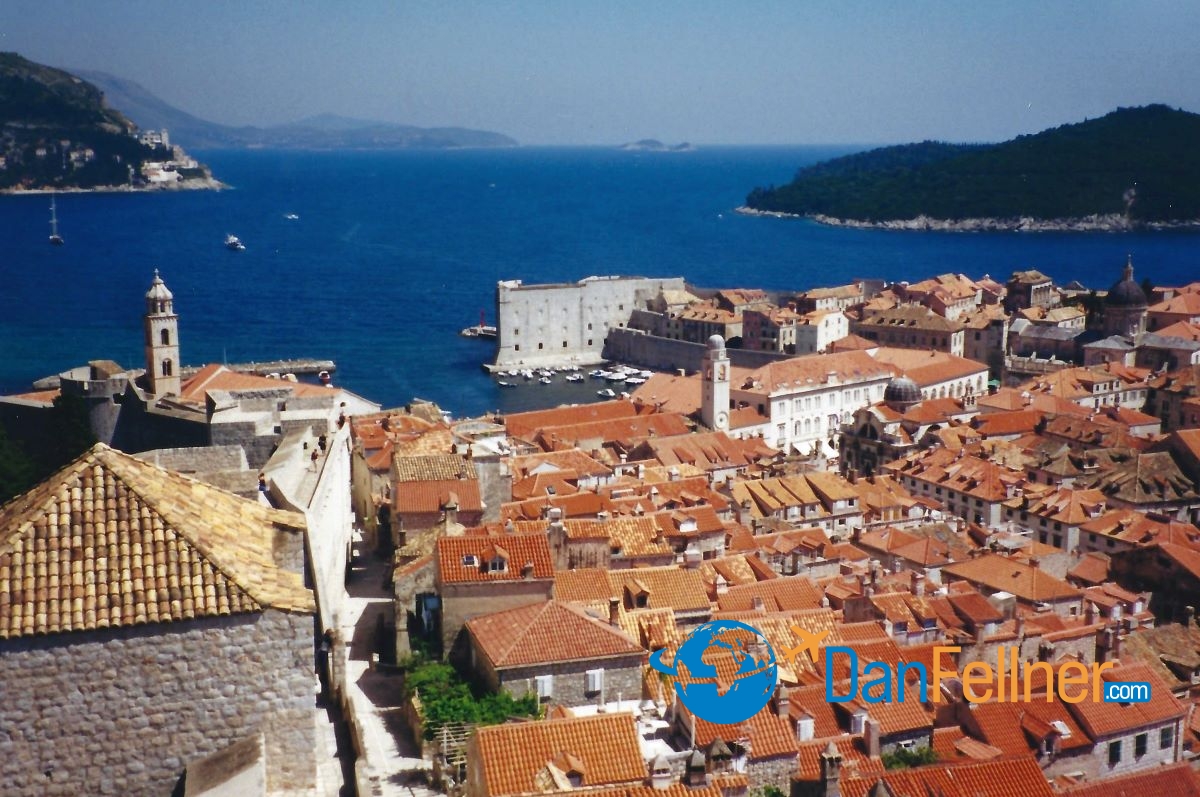
The Old Town in Dubrovnik, Croatia.
Dubrovnik was heavily damaged 10 years ago when it was shelled by Serbs and Montenegrins from the surrounding mountains during Croatia’s successful struggle for independence from Yugoslavia.
But the city has been beautifully restored. It’s difficult to spot signs of the war. The heart of Dubrovnik is its Old Town, which is surrounded by a 1 ½-mile-long wall. For $2, you can climb the stairs to the top of the wall and take one of the most scenic walks in the world. Red-roofed homes, palaces, church steeples and the blue waters of the Adriatic can be seen below.
The Old Town features a marbled pedestrian promenade known as the Placa. Aside from shops and cafes, there’s a Franciscan monastery housing a pharmacy that’s been in operation since 1317.
From Dubrovnik, we sailed through the Ionian Sea to Piraeus, Greece, about seven miles southwest of Athens. Most passengers opted to take an excursion into Athens to see the Acropolis. However, we had already been to Athens and instead chose a tour that took us down the Saronic coast to scenic Cape Sounion, on the southeastern tip of mainland Greece.
The cape is home to the famous Temple of Poeidon, perched on a cliff overlooking the sea. Several columns of the temple remain, which dates back 2,500 years. The poet Lord Byron was so inspired by the place that he carved his name on one of the columns.
For those interested in archaeology, it’s hard to top the ruins of Ephesus, just a few miles outside the port of Kusadasi, on Turkey’s west coast. Ephesus, dating back to 1000 B.C., is one of the best-preserved ancient cities in the world.

The Library of Celsus in Ephesus, Turkey.
A stroll down the city’s main marble street leads to a number of interesting structures, including temples, baths, a 25,000-seat stadium still used for concerts today, and the two-story Library of Celsus that housed 12,000 scrolls.
But the Ephesians liked to do more than read. Right across the street from the library sits the remnants of a brothel.
Near Ephesus are the ruins of St. John’s Basilica, which is believed to be the original burial site of John the Apostle, and the single remaining column of the temple of Artemis, known as one of the Seven Wonders of the Ancient World.
Don’t be put off by the admission charge to Ephesus – seven million Turkish liras. Turkey’s inflation rate is now running at a whopping 70 percent, and its currency has been devalued. As soon as you pull a dollar bill out of your wallet, you instantly become a Turkish millionaire. Seven million liras translate into less than $6.
This makes the Kusadasi bazaar a shopper’s paradise. It’s hard to resist buying a Turkish carpet, and you can watch them being made by hand in front of many shops. Leather goods, jewelry and brass also are pervasive.
As a gesture of hospitality, it’s common for Turkish shopkeepers to offer their clientele hot tea as they browse. It will help soothe your nerves for the obligatory bargaining, which is as intense as you’ll encounter anywhere.
The ship left Kusadasi for the four Black Sea ports on our itinerary, Odessa and Yalta in Ukraine; Constantza, Romania; and Varna, Bulgaria. On the way, we sailed through the Bosporus, a narrow 20-mile strait that begins in Istanbul and separates Europe from Asia.
Not many cruise lines visit the Black Sea, and it’s a chance to observe how former Communist countries are making the transition to a free-market economy. As soon as we arrived in Odessa and were besieged by beggars, we could see how difficult the transition has been for some.
The tourism trade is still in its infancy in these countries. This means you won’t find many five-star hotels, people who speak English and stores that accept dollars. But you will see some fascinating historical sites and a population truly welcoming of visitors (and in dire need of their foreign currency).
Odessa is the largest city on the Black Sea, with a population of more than 1 million. Many of them live in drab, look-alike apartment buildings built long before Ukraine’s independence from Russia in 1991. Our guide told us that the city’s unemployment rate is nearly 50 percent.
The city is perhaps best known to Americans for its massive Potemkin Staircase, immortalized in the landmark 1925 Eisenstein film “Battleship Potemkin.” The staircase, which has 192 steps leading up from the harbor to the main part of town, was built in 1837. Odessa also boasts some fine museums and an opera house built to resemble the one in Vienna.
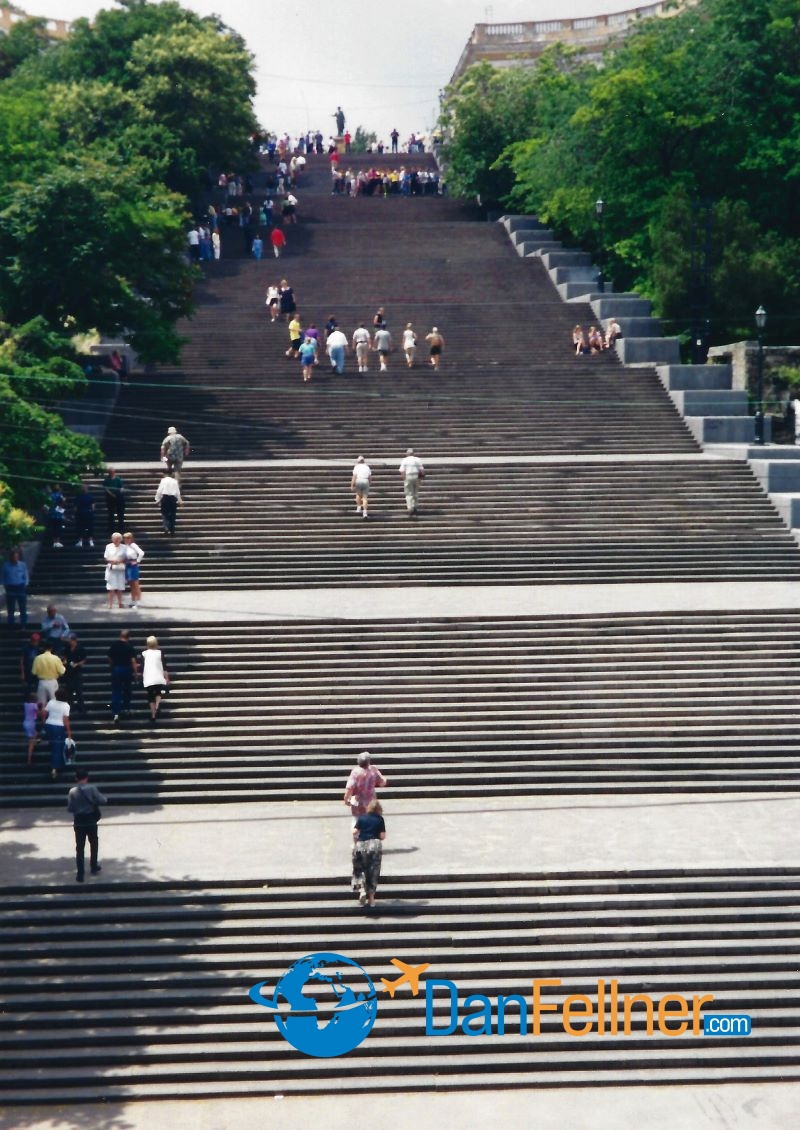
The famous Potemkin Staircase in Odessa, Ukraine has 192 steps.
Scenic Yalta, located on the southern coast of Ukraine’s Crimean Peninsula, is a popular summer resort area for eastern Europeans. The town is nestled beautifully in the Crimean Mountains and with good beaches, gardens and a subtropical climate, it’s no wonder that Russian czars and 19th-century writer Anton Chekhov chose to live there. Chekhov’s home is now a museum, and it features a piano Rachmaninov played when he visited.
Yalta made history in 1945 when it hosted Roosevelt, Churchill and Stalin for a conference at the Livadia Palace, at which the fate of postwar Europe was decided. Inside Livadia, which was built in 1911 as the summer residence of Russia’s last czar, Nicholas II, you can see the table and chairs where the three men actually signed the agreement as well as other memorabilia from the historic event.
At the time of my visit to Crimea in 2001, it was under Ukrainian control. However, that changed in 2014 when Russia annexed the Crimean Peninsula. Needless to say, cruise ships have stopped calling on ports in the region.
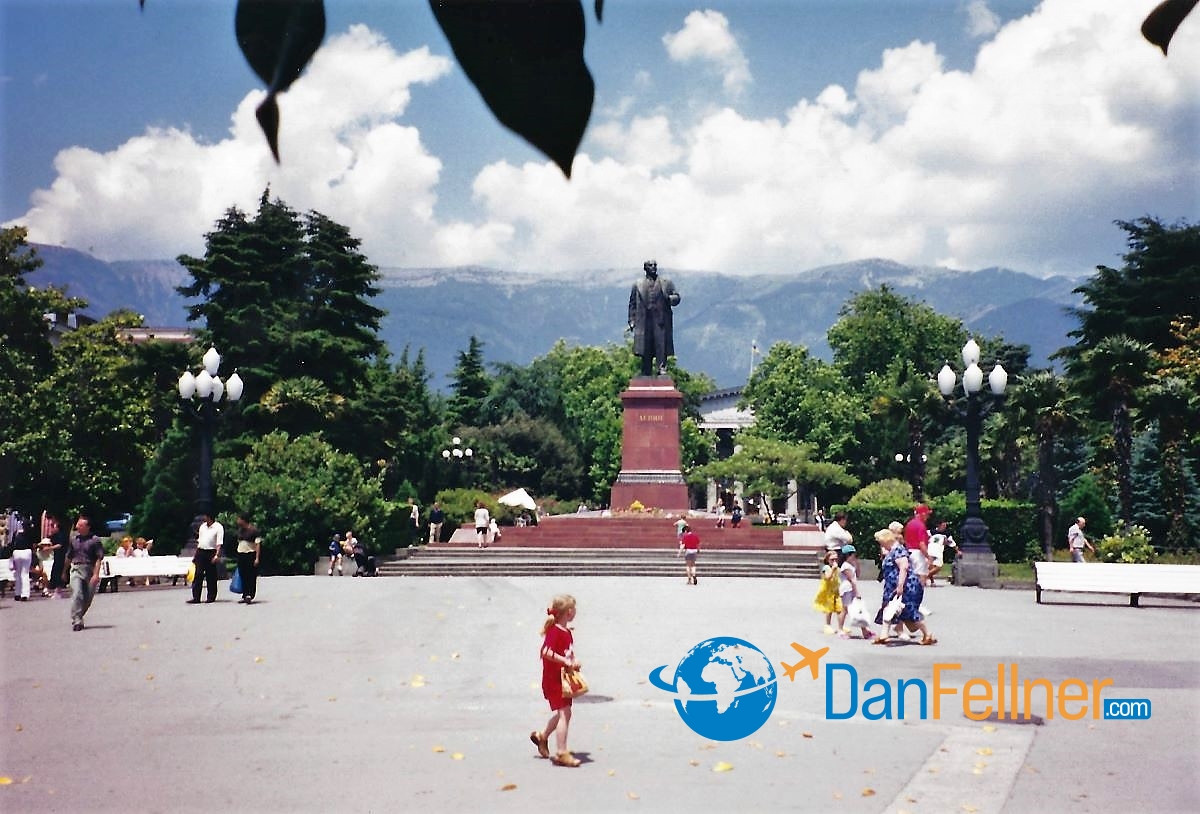
A statue of Lenin overlooks the main square in Yalta on the Crimean Peninsula.
Our next port, Constantza, Romania, is a poor and dilapidated city of about 300,000 people, and seemingly, just as many stray dogs. Romania still is trying to recover from the brutal reign of dictator Nicolae Ceausescu, who plunged the country into economic ruin before he was executed in 1989.
We found it interesting that in Constantza’s National History Museum, there was not one mention of Ceausescu, who ruled Romania for 22 years.
“People want to forget him,” our guide told us.
There isn’t much in the way of sightseeing in Constantza, but we enjoyed a trip to the Murfatlar Vineyard in the Romanian countryside, about eight miles outside the city. Romania produces some good wines, and a bottle of Murfatlar’s best vintage will set you back only $4. While we sampled cabernets and pinot noirs, we were treated to a Romanian folk-dancing show.
Varna, Bulgaria, is a major naval and commercial shipping port rich in Greek and Roman history. The Varna Archaeological Museum has some remarkable displays, including objects recovered from a 1972 excavation in the area dating back 6,000 years. Most interesting is a display of the oldest specimens of gold jewelry ever discovered.
The city also has some well-preserved Roman baths dating from the 4th century and the impressive 19th-century Orthodox Cathedral of the Assumption, built to resemble the Cathedral of St. Petersburg.
Our journey ended in Istanbul, Turkey, a congested city of 13 million people that spans two continents – Europe and Asia. Every day, 3 million of the city’s residents commute from one continent to the other, either by ferryboat or bridge across the Bosporus.
We spent only a day in Istanbul – not nearly enough time to explore its many palaces, mosques and bazaars.

Istanbul’s 400-year-old Blue Mosque.
No trip to Istanbul would be complete without a stop in the famous Grand Bazaar, where you can find more than 4,000 shops on 60 streets. It’s easy to get lost in the labyrinth of corridors and passages, so unless you have a good sense of direction, don’t stray too far from the central shopping street.
And it’s worthwhile to learn one word of Turkish before you go – “hayir.” It means “no,” a word you’ll need to use repeatedly to fend off the persistent vendors.
All told, the ship visited nine ports on seven countries and two continents over 12 days. A couple of “at sea” days along the way enabled us to catch our breath from the hectic pace of sightseeing.We saw some exotic places that we probably would have been reluctant to visit on our own.
Cruising offers a nice blend of comfort and adventure. Trekking through ancient ruins, shopping in a Turkish bazaar and witnessing new democracies emerge in the former Soviet bloc can be exhilarating.
But it’s always nice to return to the ship at the end of the day, to a five-course dinner and a clean bathroom.

